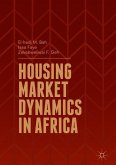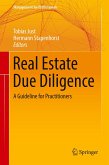Cities are growing worldwide and their sprawl is increasingly challenged for its pressure on open spaces and environmental quality. Economic arguments can help to decide about the trade-off between preserving environmental quality and developing housing and business surfaces, provided the benefits of environmental quality are adequately quantified. To this end, this book focuses on the use and advancement of the "hedonic approach", an economic valuation technique that analyses and quantifies the sources of rent and property price differentials. Starting from theoretical foundations, the hedonic approach is applied to the valuation of natural land use preservation and noise abatement measures, as well as to residential segregation and discrimination, extending the analysis to the role of the buyers and sellers' identity on housing market prices and to the issue of environmental justice.
From the reviews:
"This book provides a very useful presentation of the theory and empirics of hedonic pricing. ... overall structure of the book addresses clearly the theoretical development of the hedonic price model and its empirical applications in multiple subfields. ... most use to the applied urban researcher ... . The authors use figures and maps to show the importance of being able to visualize one's econometric results, especially in an area so rooted in spatial relationships as housing markets." (Clifford A. Lipscomb, The Review of Regional Studies, Vol. 38 (1), 2008)
"This book provides a very useful presentation of the theory and empirics of hedonic pricing. ... overall structure of the book addresses clearly the theoretical development of the hedonic price model and its empirical applications in multiple subfields. ... most use to the applied urban researcher ... . The authors use figures and maps to show the importance of being able to visualize one's econometric results, especially in an area so rooted in spatial relationships as housing markets." (Clifford A. Lipscomb, The Review of Regional Studies, Vol. 38 (1), 2008)








